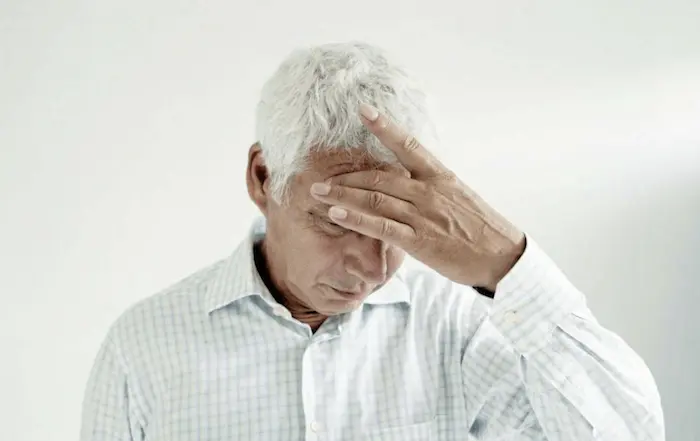Orthostatic hypotension (OH), defined as a sustained drop in blood pressure upon standing, is more than a fleeting inconvenience. For many, it is a chronic condition that signals underlying cardiovascular, neurologic, or autonomic dysfunction. Over time, this disorder may not remain static; instead, it can deteriorate, especially when associated with aging, neurodegenerative diseases, or progressive autonomic failure. Understanding whether orthostatic hypotension can worsen is crucial for both patients and clinicians. This article delves into the mechanisms, risk factors, potential complications, and long-term management of progressive orthostatic hypotension.
What Is Orthostatic Hypotension?
Orthostatic hypotension is diagnosed when there is a drop of at least 20 mmHg in systolic or 10 mmHg in diastolic blood pressure within three minutes of standing. Symptoms include dizziness, blurred vision, fatigue, lightheadedness, and in severe cases, syncope. OH may be acute, intermittent, or chronic, depending on the underlying cause and severity.
Types of Orthostatic Hypotension
There are three primary classifications:
Neurogenic OH: Often due to autonomic dysfunction seen in Parkinson’s disease, multiple system atrophy, and diabetic neuropathy.
Non-neurogenic OH: Includes causes like dehydration, blood loss, or medication-induced hypotension.
Delayed OH: A more subtle form where symptoms and BP drops occur after more than three minutes of standing.
Can Orthostatic Hypotension Get Worse Over Time?
Yes, orthostatic hypotension can worsen, particularly in patients with progressive underlying conditions. The trajectory of worsening depends on multiple factors including the primary disease, patient age, cardiovascular fitness, and presence of autonomic dysfunction.
Factors Contributing to Worsening OH
1. Aging
Aging naturally reduces baroreceptor sensitivity and autonomic function. Older adults often experience stiffened blood vessels, slower cardiac responses, and reduced sympathetic tone. These age-related changes compromise the body’s ability to adjust blood pressure during positional shifts.
2. Autonomic Nervous System Disorders
Conditions like Parkinson’s disease, multiple system atrophy, and pure autonomic failure are closely tied to progressive orthostatic hypotension. As the nervous system degenerates, autonomic regulation of blood pressure declines, making hypotensive episodes more frequent and severe.
3. Diabetes Mellitus
Chronic diabetes can lead to autonomic neuropathy. Over time, the sympathetic and parasympathetic systems may become impaired, preventing effective vasoconstriction on standing, thus worsening OH.
4. Medications
Certain drugs exacerbate OH, particularly:
- Diuretics
- Alpha-blockers
- Nitrates
- Tricyclic antidepressants
Cumulative use over time can amplify hypotensive episodes, especially in polypharmacy cases.
5. Dehydration and Volume Depletion
Frequent or chronic dehydration reduces circulating blood volume, leading to lower baseline blood pressure and heightened susceptibility to orthostatic changes.
Complications of Worsening Orthostatic Hypotension
1. Syncope and Falls
As OH progresses, the risk of transient cerebral hypoperfusion increases. This can lead to loss of consciousness, resulting in falls and injuries.
2. Cognitive Impairment
Chronic cerebral hypoperfusion may contribute to cognitive decline, particularly in elderly patients. This relationship is often under-recognized but may be clinically significant.
3. Cardiovascular Strain
OH may coexist with supine hypertension, placing stress on the cardiovascular system. This paradoxical pattern is especially common in neurogenic OH, further complicating management.
4. Reduced Quality of Life
Frequent symptoms like dizziness, fatigue, and syncope restrict mobility and independence. Psychological consequences such as anxiety and depression often follow, further deteriorating quality of life.
Diagnostic Tools for Monitoring OH Progression
1. Active Stand Test
Monitors BP changes from supine to standing at 1, 3, and 5 minutes to detect delayed OH.
2. Tilt-Table Test
Simulates standing to observe cardiovascular responses in a controlled setting, useful for diagnosing neurogenic causes.
3. Ambulatory Blood Pressure Monitoring (ABPM)
Provides continuous BP data, capturing fluctuations throughout the day and night, including supine hypertension.
Long-Term Management Strategies
1. Lifestyle Modifications
- Increase fluid and salt intake (under supervision)
- Elevate the head of the bed to reduce nocturnal hypertension
- Avoid alcohol and hot environments
- Rise slowly from lying or sitting positions
- Wear compression stockings or abdominal binders
2. Pharmacologic Treatments
Fludrocortisone
A mineralocorticoid that increases blood volume by promoting sodium retention. Useful in volume-depleted patients.
Midodrine
An alpha-agonist that induces vasoconstriction. Taken prior to activities that trigger symptoms.
Droxidopa
A synthetic precursor of norepinephrine. Effective in neurogenic OH with reduced sympathetic tone.
Pyridostigmine
Inhibits acetylcholinesterase, improving autonomic signaling. Often used as adjunct therapy.
3. Treating Underlying Causes
- Manage diabetes and prevent neuropathy progression
- Adjust or eliminate offending medications
- Control heart failure and volume status
- Treat neurodegenerative diseases symptomatically
4. Patient Education
Empowering patients to monitor their symptoms, recognize triggers, and adapt daily routines is essential in managing progressive OH. Regular follow-ups and support from caregivers enhance adherence to treatment.
Monitoring and Follow-Up
Routine Assessments
Regular BP checks in supine, sitting, and standing positions should be conducted. Monitoring orthostatic changes over time helps in adjusting therapy and detecting deterioration early.
Adjusting Treatment Plans
Treatment must be individualized. Some patients may require escalating therapy, combination drugs, or changes based on evolving conditions.
Preventive Approaches for High-Risk Individuals
Early Detection
Routine screening in elderly patients and those with diabetes or Parkinson’s is critical. Early intervention prevents symptom progression.
Exercise Programs
Mild resistance and recumbent exercises improve venous return. Cardiovascular conditioning can strengthen autonomic response over time.
Research and Future Directions
Ongoing trials are exploring novel therapies targeting autonomic dysfunction. Gene therapy, neuromodulation, and more precise pharmacologic agents may offer future solutions.
Conclusion
Orthostatic hypotension, especially when neurogenic or linked to systemic disease, is not a benign condition. Its progression can lead to dangerous complications, affecting cognition, mobility, and cardiovascular health. Through early recognition, lifestyle changes, tailored pharmacologic therapy, and continuous monitoring, patients can maintain function and quality of life. As understanding deepens and treatments evolve, proactive management remains the cornerstone of care.
Related topics:


